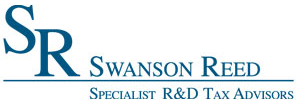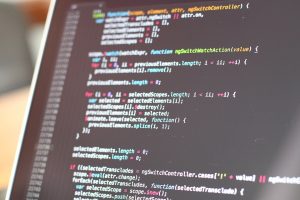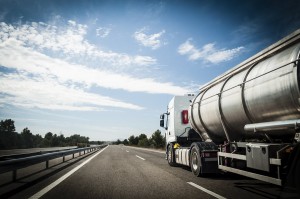Washington Patent of the Month – May 2025
A new patent application from JETOPTERA INC. outlines a next-generation vertical take-off and landing (VTOL) aircraft design that could reshape short-range air mobility. U.S. Patent Application [...]
Aviation Case Study
Business Scenario
Airtime Helicopters (Airtime) was established in 2008 to provide charter, scenic and photography services.
Airtime felt a need to further enhance the recording quality and stability of its current camera unit to improve clarity and visibility during vertical monochromatic imaging, mapping and surveying. In 2009, Airtime began an R&D project dedicated to developing and designing an attachment camera which would provide helicopter camera crews with unprecedented levels of equipment reliability for use in mapping and imaging applications.
Airtime engaged in a program of systematic, investigative and experimental activities to overcome the significant technical uncertainty and develop new knowledge regarding the impact of specific variables on the effectiveness of the new attachment design.
After experimentation, Airtime needed to determine the eligibility of its proposed R&D activities in order to know if they qualified for the Research and Experimentation Tax Credit. To be eligible, Airtime had to be certain that its “qualified research” met four main criteria, known and developed by Congress as the Four-Part Test. After self-assessing, Airtime conducted the following R&D activities.
Airtime’s Eligible R&D Activities
Design and development of a series of prototypes to achieve the technical objectives and prove the hypothesis (design and development of a camera for mapping and surveying purposes).
Airtime conducted the design and development of spring settings on specific camera types, as well as design consideration on the impact of different wind conditions. Airtime believed its camera solution could be achieved by conducting the following activities to reduce the unit’s vibration:
A series of information was gathered and evaluated to identify knowledge gaps and achieve the technical objectives.
A series of design experiments were undertaken to prove the hypothesis.
A series of trial data was analyzed and evaluated to achieve satisfactory reproducible results.
A series of developments and modifications were undertaken to interpret the algorithm data and draw conclusions that served as a starting point for the new design hypothesis.
Background research to evaluate current knowledge gaps and determine feasibility (background research for mapping and surveying camera unit).
The following background research was conducted by Airtime:
Literature search and review
Consultation with industry professionals and potential clients to determine the level of interest and commercial feasibility of such a project
Preliminary equipment and resources review with respect to capacity, performance and suitability for the project
Airtime’s background research qualified as R&D because it assisted in identifying the key elements of the project.
Ongoing analysis of customer or user feedback to improve the prototype design (feedback R&D of the camera and its mapping and surveying abilities).
Airtime conducted the following R&D activities during this phase of experimentation:
Ongoing analysis and testing to improve the efficiency of the project
Commercial analysis and functionality review
These activities qualified as R&D because they were necessary to evaluate the performance capabilities of the newly developed design in the field and to improve any imperfections.
Live Webinar: The R&D Tax Credit in the Automotive, Aviation and Transportation Industries
Duration: 60 Minutes
Learning objectives include:
- An overview of R&D Tax Credits
- Identify Qualifying Research Activities
- Define the 4-Part Test
- How to substantiate activities through documentation
- Identify Qualifying Research Expenses
Cost: FREE
CE/CPE credits: Worth one hour
Knowledge Level: Basic*
Field of Study: Taxation
Qualified Research Defined
Qualified research consists of research for the intent of developing new or improved business components. A business component is defined as any product, process, technique, invention, formula, or computer software that the taxpayer intends to hold for sale, lease, license, or actual use in the taxpayer’s trade or business.
The Four-Part Test
Activities that are eligible for the R&D Credit are described in the “Four-Part Test” which must be met for the activity to qualify as R&D.
- Permitted Purpose: The purpose of the activity or project must be to create new (or improve existing) functionality, performance, reliability, or quality of a business component.
- Elimination of Uncertainty: The taxpayer must intend to discover information that would eliminate uncertainty concerning the development or improvement of the business component. Uncertainty exists if the information available to the taxpayer does not establish the capability of development or improvement, method of development or improvement, or the appropriateness of the business component’s design.
- Process of Experimentation: The taxpayer must undergo a systematic process designed to evaluate one or more alternatives to achieve a result where the capability or the method of achieving that result, or the appropriate design of that result, is uncertain at the beginning of the taxpayer’s research activities.
- Technological in Nature: The process of experimentation used to discover information must fundamentally rely on principles of hard science such as physical or biological sciences, chemistry, engineering or computer science.
What records and specific documentation did Airtime keep?
Similar to any tax credit or deduction, Airtime had to save business records that outlined what it did in its R&D work, including experimental activities and documents to prove that the activities took place in a systematic manner.
Airtime only kept records of its literature search findings, leaving vast room for improvement in the area of substantiation.
As a company claiming R&D, you always want to be “compliance ready” — meaning if you were audited by the IRS, you could present documentation to show the progression of your R&D work. Here are some types of documentation that would be beneficial to save in the case of an audit:
- Project records/ lab notes
- Photographs/ videos of various stages of build/ assembly/ testing
- Prototypes
- Testing protocols
- Results or records of analysis from testing/ trial runs
- Tax invoices
- Conceptual sketches
- Email correspondence
- Patent application number
- Progress reports and meeting notes




































